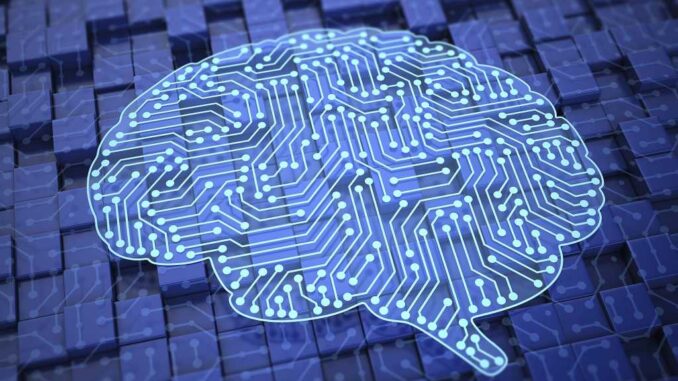
The context of AI development is multifaceted, encompassing technical, ethical, social, and economic dimensions. AI (Artificial Intelligence) refers to the simulation of human intelligence processes by machines, particularly computer systems.
These processes include learning (the acquisition of information and rules for using it), reasoning (using rules to reach approximate conclusions), and self-correction. As AI technologies evolve, understanding their development context is crucial for ensuring that they are effective, ethical, and beneficial for society.









### 1. **Technical Context**
**Foundational Technologies:**
– AI development relies on several foundational technologies, including:
– **Machine Learning (ML):** A subset of AI that uses algorithms to analyze data, learn from it, and make predictions or decisions without being explicitly programmed.
– **Deep Learning:** A branch of ML that utilizes neural networks with multiple layers to model complex patterns in large datasets, enabling advancements in areas like image and speech recognition.
– **Natural Language Processing (NLP):** A field that focuses on the interaction between computers and human language, enabling machines to understand, interpret, and respond to text or speech.
**Infrastructure and Tools:**
– The development of AI systems often requires significant computational power, data storage capabilities, and specialized tools or frameworks (like TensorFlow, PyTorch, and Jupyter notebooks).
**Data Availability:**
– The availability and quality of data are fundamental to AI effectiveness. Diverse, high-quality datasets contribute to better training and performance of AI models.
### 2. **Ethical Context**
**Bias and Fairness:**
– AI systems can inadvertently perpetuate or amplify biases present in the training data. Ensuring fairness and minimizing bias is a critical concern in AI development to avoid discrimination against certain groups.
**Transparency and Explainability:**
– As AI systems become more complex, the need for transparency and explainability grows. Stakeholders need to understand how AI systems make decisions, particularly in sensitive areas like healthcare, finance, and law enforcement.
**Accountability:**
– Assigning responsibility for AI actions and decisions raises ethical questions about accountability, particularly when an AI system causes harm or makes erroneous judgments.
**Privacy Issues:**
– The use of personal data for AI training and decision-making raises privacy concerns. Developers must balance the benefits of data-driven insights with individuals’ rights to privacy and data protection.
### 3. **Social Context**
**Impact on Employment:**
– AI has the potential to reshape job markets by automating routine tasks, leading to concerns about job displacement. While new opportunities may arise, there are challenges related to workforce reskilling and adapting to new roles.
**Public Perception:**
– The public’s understanding and perception of AI influence its adoption. Misconceptions can lead to fear or resistance to AI technologies, while positive narratives can drive innovation and acceptance.
**Cultural Considerations:**
– Different cultures may have varying attitudes towards AI and technology, affecting how AI solutions are adopted and implemented across regions.
### 4. **Economic Context**
**Investment and Growth:**
– The AI sector is rapidly growing, attracting significant investment from both public and private sectors. Governments and corporations see AI as a driver of economic growth and innovation.
**Global Competition:**
– Countries and regions are competing to establish themselves as leaders in AI technology. This competition influences policies, funding, and the development of AI ecosystems.
**Business Transformation:**
– AI is transforming industries by improving efficiency, enabling new business models, and enhancing customer experiences. Businesses that leverage AI effectively can gain a competitive edge.
### 5. **Regulatory and Policy Context**
**Regulation Development:**
– Governments and regulatory bodies are increasingly focusing on creating frameworks to govern AI development and deployment. This includes establishing safety standards, ethical guidelines, and compliance requirements.
**Collaboration Across Sectors:**
– Collaboration between academia, industry, and government is essential for responsible AI development. Multistakeholder approaches can help ensure that diverse perspectives are considered in policymaking.
### 6. **Human-Centric Design**
**User-Centric Approaches:**
– Focusing on the needs and experiences of users is crucial for developing AI systems that are effective, usable, and beneficial. Using user feedback and co-design practices can help create more inclusive and accessible systems.
### 7. **Future Trends**
**Advancements in AI Research:**
– Emerging trends in AI research, such as explainable AI (XAI), reinforcement learning, and the integration of AI with other technologies (like IoT and blockchain), are shaping how AI systems are developed and applied.
**Sustainability:**
– As the environmental impacts of data centers and computational resources come under scrutiny, there is a growing emphasis on developing sustainable AI practices that minimize the ecological footprint.
### Conclusion
The context of AI development is dynamic and evolving, influenced by a blend of technological, ethical, social, economic, regulatory, and human-centric factors. Navigating these complexities requires a holistic approach that emphasizes responsible innovation, inclusivity, and ethical considerations. As AI continues to reshape various aspects of society, understanding this context is pivotal for stakeholders involved in AI development, from researchers and developers to policymakers and businesses. By addressing these challenges and opportunities thoughtfully, the AI field can contribute significantly to positive societal outcomes.


Leave a Reply